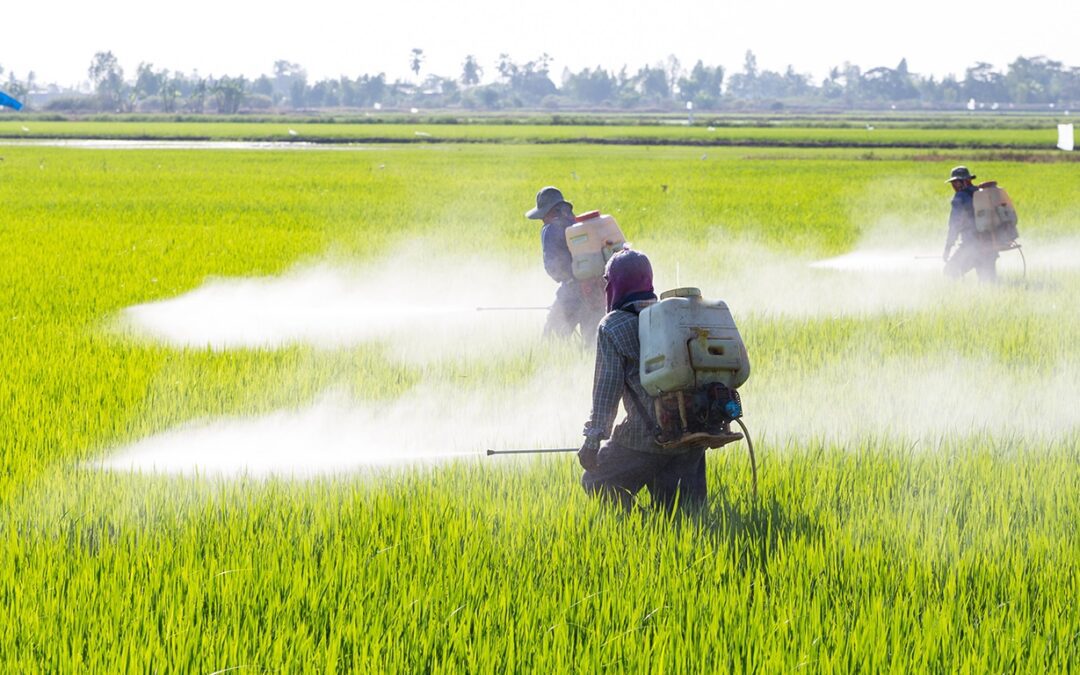What are the pesticides, and how do regulations tackle them?
Pesticides are chemicals that are used to manage or eliminate pests such as insects, weeds, fungi, and rodents. They are frequently used in agriculture to protect crops from harm and to increase indirect output.
Maximum residue limits (MRLs) are established by regulatory agencies to guarantee that pesticide residues in food and other products do not constitute a health concern to consumers. These limits are established based on thorough scientific assessments of the potential health effects of pesticide exposure, and they are updated on a regular basis to reflect the most recent research and data. It is crucial to highlight that when pesticides are used in accordance with established recommendations and MRLs are met, pesticide residue levels in food are normally very low.
Why is it difficult to detect pesticide residues in water sources?

Detecting pesticide residues in water sources can be difficult for a variety of reasons as mentioned below:
Low detection limits: Pesticides are frequently present in very low (ppb level) amounts in water, making precise detection challenging. To assess extremely low quantities, specialized equipment, and sensitive analytical techniques are necessary.
Wide range of pesticides: Pesticides are utilized in agriculture in a variety of ways, each with its own set of chemical qualities. Detecting and analyzing such a diverse spectrum of substances necessitates a variety of testing procedures and skills.
Chemical breakdown: Pesticides deteriorate over time as a result of environmental conditions such as sunlight, temperature, and microbial activity. This breakdown can produce metabolites or transformation products that are more difficult to detect than the original pesticide.
Matrix interference: Water samples frequently contain a complex mix of organic and inorganic components, including minerals, organic matter, and other contaminants. These matrix components can interfere with pesticide residue detection and analysis, resulting in false positives or negatives.
Sampling challenges: Collecting representative water samples from different sources can be challenging due to the variability in pesticide distribution. Factors such as depth, flow rate, and sedimentation can affect the distribution and concentration of pesticides in water.
Overall, the detection of pesticide residues in water sources is a complex task that requires advanced analytical techniques, careful sample collection and preparation, and expertise in pesticide chemistry.
Why detecting pesticide residues in water sources is so important

Pesticide residue detection in water sources is critical for various reasons. Pesticides, for example, are commonly employed in agricultural practices to control pests and boost crop yields. However, these chemicals can enter water sources through a variety of channels, including field runoff, soil leaching, and inappropriate pesticide container disposal. Excessive pesticide residues in water can be hazardous to both human health and the environment. Pesticides are known to be hazardous, and ingesting them through contaminated water can result in immediate or chronic health problems. Long-term pesticide exposure has been related to a variety of health issues, including cancer, reproductive difficulties, and neurological diseases.
Pesticide residues in water can potentially have a negative impact on aquatic ecosystems. They can contaminate water bodies, impair aquatic creatures’ survival and reproduction, and upset the delicate balance of the ecosystem. As a result, regular pesticide residue testing methods are required to assure the safety of water sources.
What are the testing procedures for pesticides?

Pesticides testing procedures typically involve the following steps:
Extraction: The pesticide residues are extracted from water samples. This can be accomplished through the use of several extraction techniques such as solid-phase extraction and liquid-liquid extraction.
Clean-up: Following extraction, the samples may be cleaned to remove undesired impurities that could interfere with the analysis. This phase ensures that the outcomes are accurate and dependable.
Analytical techniques: Various analytical techniques can be used to detect and quantify pesticide residues. Some commonly used methods include gas chromatography-mass spectrometry (GCMSMS), and liquid chromatography-mass spectrometry (LCMSMS. These techniques help identify and quantify specific pesticides present in the sample.
Calibration standards: Calibration standards are used to establish a link between pesticide concentration and instrument response. This enables precise quantification of pesticide residues in the sample.
Quality control: Throughout the analytical process, quality control methods are used to verify the correctness and reliability of the results. This may entail using certified reference materials, blank samples, Spike recovery, and repeats.
Data interpretation: The analysis’s results are interpreted by comparing them to regulatory limits or guidelines for pesticide residues in water.
Regular pesticide residue monitoring and testing of water are critical for identifying potential contamination issues, assessing the effectiveness of pesticide management practices, and taking required precautions to protect human health and the environment.
What Cultivator Phyto lab can do for pesticide residues test
Cultivator Phyto Lab is a cutting-edge laboratory that performs over 400+ pesticide residue assessments in accordance with national and international regulatory bodies. We’ve developed a number of methodologies for measuring pesticide residues in a variety of matrices and food commodities, Water, AYUSH, Cosmetics, and agricultural products.
Authors: Dr. Sanjoy Gupta and Kumar Nitesh
References:
- https://www.ncbi.nlm.nih.gov/pmc/articles/PMC3108117/
- https://www.ncbi.nlm.nih.gov/pmc/articles/PMC7826868/pdf/ijerph-18-00468.pdf
- https://www.sciencedirect.com/science/article/pii/S2215016118301122
- https://www.agilent.com/enus/agilent404?s=www.agilent.com/cs/library/applications/5991-6999EN_v4.pdf
- https://apps.who.int/iris/bitstream/handle/10665/195648/9789241509671_eng.pdf?sequence=1

